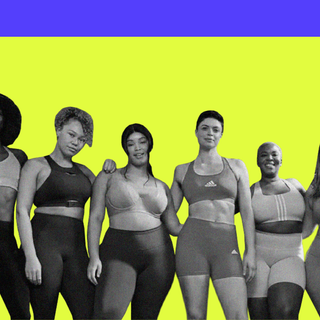
In ‘Modern Love Mumbai,’ the City Dictates How Women Navigate Love and Loss
Mobility within a city is always linked to freedom, but the complexity lies in who has the agency to move and how.

The Modern Love anthology is a cultural monolith. But how does modern love translate to a culture that is only now realizing its biases?A better question would also be: what does modern love look like in the romanticized world of Mumbai, a city built on paradoxes? Glassy steel buildings and high rises hold a towering presence over a sea of chawls, forgotten; rustic buildings never forgetting their colonial past house corporates and migrant workers all at once; the former sit coolly indoors, while the latter fight for space between pillars and pedestals.
It is at once clear that any love story is never contained solely within partners in a relationship, but dictated by the agency this city gives to its people. Two stories within Modern Love Mumbai show the dual orientations of power and powerlessness, through the perspectives of two women who negotiate space, agency, and love.
The first episode is aptly titled Raat Rani (directed by Shonali Bose); Lali (Fatima Sana Shaikh), a cook, deals with the disintegration of a 12-year-old marriage. Anything that could go wrong went wrong for her: her husband leaves her, the roof of her one-room house collapses, and she lacks the money to fix it. What keeps her afloat in this city is a dream of mobility; Lali wishes more than anything to bicycle through theBandra-Worli Sea Link. The 5.6 km long bridge warns at its entrance: “Two-wheelers and pedestrians not allowed.”
A tale of marriage and abandonment also unfolds in Cutting Chai (directed by Nupur Asthana), where we see Latika (Chitrangda Singh) essaying a character in crisis. Marriage and motherhood have consumed her; rigid gender norms mean all care work and responsibility fall on her. Now in her 40s, Latika laments a possible and unrealized career as a writer, reliving what could have been possible in her imagination only. What if she had never met her husband, Danny (Arshad Warsi)? What if she had eloped and seen a passionate love come to fruition? What if romance was not meant for her just yet, and she had gone on to be the author she envisioned herself to be? She strokes these narratives of reality — lived and imagined — while waiting for her husband at the historic Chhatrapati Shivaji Terminus.
Both are stories of women disillusioned and grieving. But the yearning — and loss — of love is an experience that is splintered along the lines of privilege. We see these fissures play out in how they access the city — a space where gender, class, and caste, determine identity, experiences, and freedom.
Related on The Swaddle:
Tell Me More: Talking Urban Women’s Safety and Access With Dr. Shilpa Phadke
We meet Latika and Lali in different stages of marriage and love. In Cutting Chai, Latika contemplates leaving her husband, wistfully walking around Fort and CST, reliving memories of past and present. This visual montage of a woman watching the many what-ifs play out in front of her is indeed powerful. At this stage, Latika carries a touch of disappointment and a whole of lot disillusionment. She is tussling between the thought of staying in a marriage as opposed to leaving it; a battle that almost always plays out in the mind but is never visualized. The many compromises people make in heterosexual partnerships remain within themselves, in the name of love. It is hard for Latika to take the plunge; women are split one too many ways and experience “separation guilt“for desiring to opt-out of patriarchal institutions that strip them of their dignity. There is a power imbalance in her relationship too, but by virtue of her social location, Latika has the choice to think of separating from her husband.
In Raat Rani, however, Lali is the one left abandoned by her roving husband. He leaves without the promise of coming back, or without the assurance of never coming back also. She is marginalized first by her gender; with her religion (she is Muslim) and socioeconomic location deciding where she lives and how. The “runaway husbands” are a well-documented menace in the Indian society; where they exit relationships without the responsibilityof divorce or monetary support. Lali doesn’t cower to this; her first instinct is to hop on her cycle and hold her husband answerable. Lali receives news of her husband leaving while waking up in a pool of dust and rubbles, despairingly looking at a hole the size of the sun on her roof. She doesn’t have the resources to fix it; for over five weeks, she waits for a solution for her marriage as well as the roof. A separation is never an option for Lali, at least initially.
While some may have the liberty to think of a life outside the institution of marriage, Lali is negotiating with this loss within the framework. Both are stories of self-reflection and finding oneself, but the degree of implicit freedom available to the two women varies. Women who have to forego professional careers for household care work experience oppression differently from those who have no social or economic agency.
It is also interesting to trace where this introspection of theself happens. Latika takes the kaali peeli, the train, and wistfully strolls through the city. As we see through her memories and regrets, there is greater mobility in spaces, experiences, and opportunities. Latika has poetic license to imagine her world collapsing around her; to place songs and drama at the center of CST. She romanticizes it — because she can. Lali’s story is mostly confined to a broken home. Her rusty cycle that she uses between points A and B — but never to cross a bridge of dreams — echoes a static existence. Mumbai’s dream-like state remains accentuated in Lali’s mind; she flocked to the city of dreams from Kashmir years ago. This “arrival city” thatno one, and yet everyone, can claim ownership to; where millions arrive in search of more. In so many ways, Mumbai fails Lali for never fully materializing her relationship and dreams.
Mobility within a city is always linked to freedom, but the complexity lies in who has the agency to move and how. Dr. Shilpa Phadke, co-author of Why Loiter?, notes that whatever “consumer citizenship” women are granted is for “a certain kind of middle-class woman, who is desirable in a public space because her presence buttresses the claims of, say, Mumbai as a ‘global city’ — one where women are visible and have a certain amount of access.”
But Mumbai is where both women find themselves — some by force, others by chance. It is also evident in the two motifs the two stories use to assert Mumbai’s place-hood: cutting Chai and bicycle as a mode of transport. Both helped them find love, but also distanced them from it. Cutting chai is how Latika first met her husband; it is also a harmless cup of chai at the CST that makes her reevaluate her choices and relationship. Lali takes the bicycle out to plead with her husband to come back; later it is this bicycle that she rides on to defy a city’s invisible barriers.
Related on The Swaddle:
How Cities Are Designed to Restrict Women’s Access to Drinking Culture
Yet, there is something in amiss in using the city to bring about a resolution to each story. All six episodes within the anthology romanticize Mumbai to a degree of unquestioning devotion. This is also a city, just like any other, that thwartstheir freedom through logistical and social barriers; women remain “hyper-visible” in a city that wasn’t designed for them. Then romanticizing a city to a fatal degree becomes a concerning exercise; if women are unseen observers, how do they ever make this city their own? Can they blend into Mumbai, the city where to dream is also a question of agency?
In theory, a relationship with the city can help empower women and gender minorities, with varying experiences marked along the lines of class, caste, and religion. But that would require the city and its infrastructure to rise up and question the exclusionary nature of its being. Lali’s episode is titled Raat Rani, but she is never a queen during the day. It is only when she defies rules and crosses the bridge that she feels truly free.
This aligns with what Dr. Phadke said about negotiating with a city: “Universally, there are certain strategies that women use to access public spaces and this involves, say, wearing clothes that draw the least amount of attention. So you have baggy clothing, you carry large bags in order to look like you have a purpose, and you try in many ways to make yourself as minimally visible as possible so that you maximize your access to the public.” If the anthology is a love letter to Mumbai, the question of access and agency as shaped by social locations deserved more than a footnote.
The twin narratives bookend the Mumbai version of the series. We start with Lali and end with Latika; in the process, we chance upon a realization oft contested and even tragic: Can you survive a city of dreams — but also of disparity — only if you romanticize it?
Alas, there is no resolution to what is achieved, and what is lost, when women idealize a city that oppresses them. Maybe an answer is a wrong expectation to harbor here too.
There is constant defiance people lay to claim the limited freedoms available in cities. Lali’s visual from the concluding minutes of Raat Rani offers succor. “Two-wheelers and pedestrians not allowed. Going to college? Not allowed. Going out at night? Not allowed. Falling in love? Not allowed. Marrying a man from a lower caste? Not allowed. And when he leaves you? Being happy is not allowed,” she says, while cycling into the inky black night, her hands inviting resistance.
“What else is not allowed?”
Saumya Kalia is an Associate Editor at The Swaddle. Her journalism and writing explore issues of social justice, digital sub-cultures, media ecosystem, literature, and memory as they cut across socio-cultural periods. You can reach her at @Saumya_Kalia.
Related


Why People Find Women in High Heels More Attractive, Feminine, and Well‑Off
